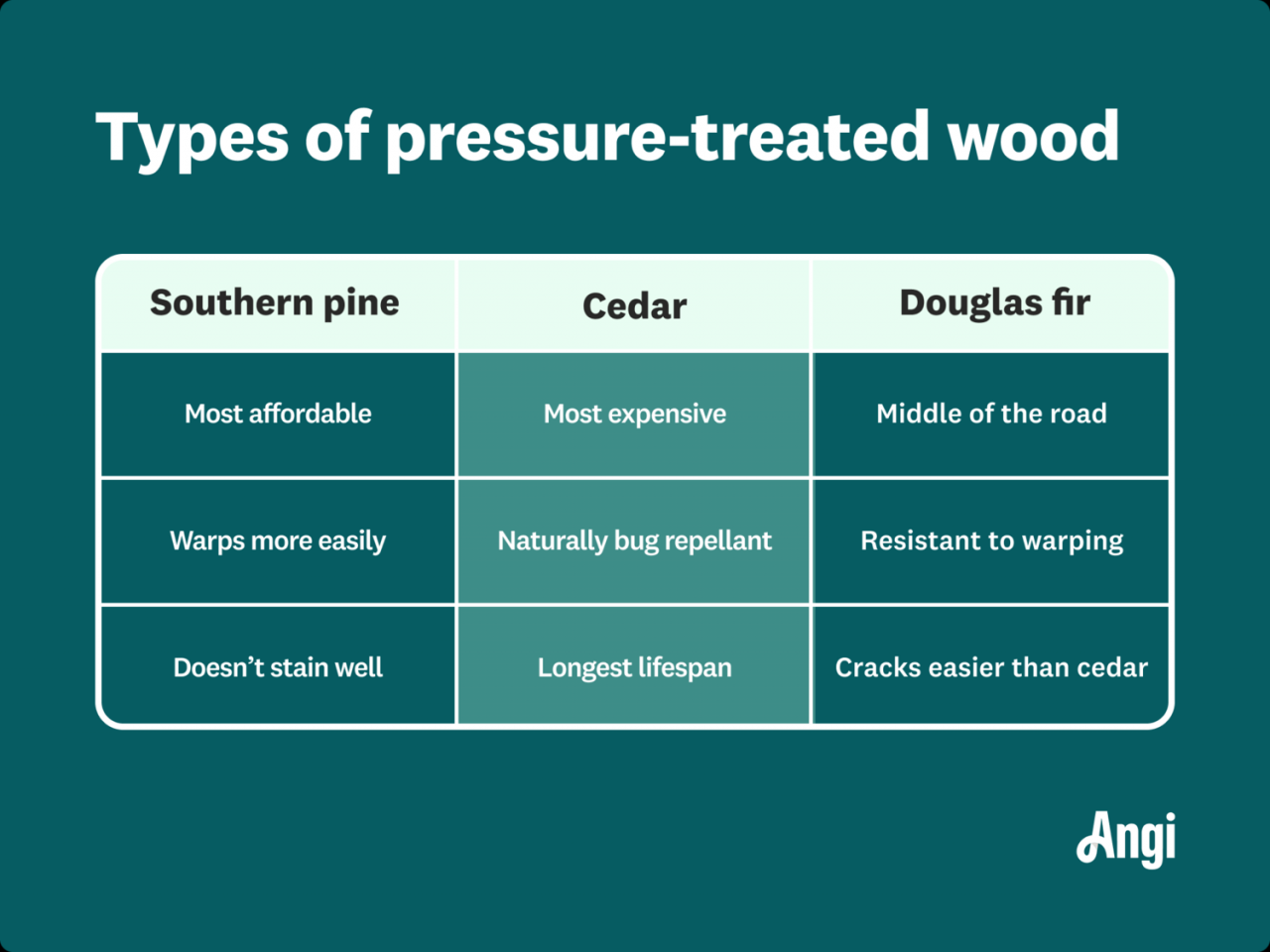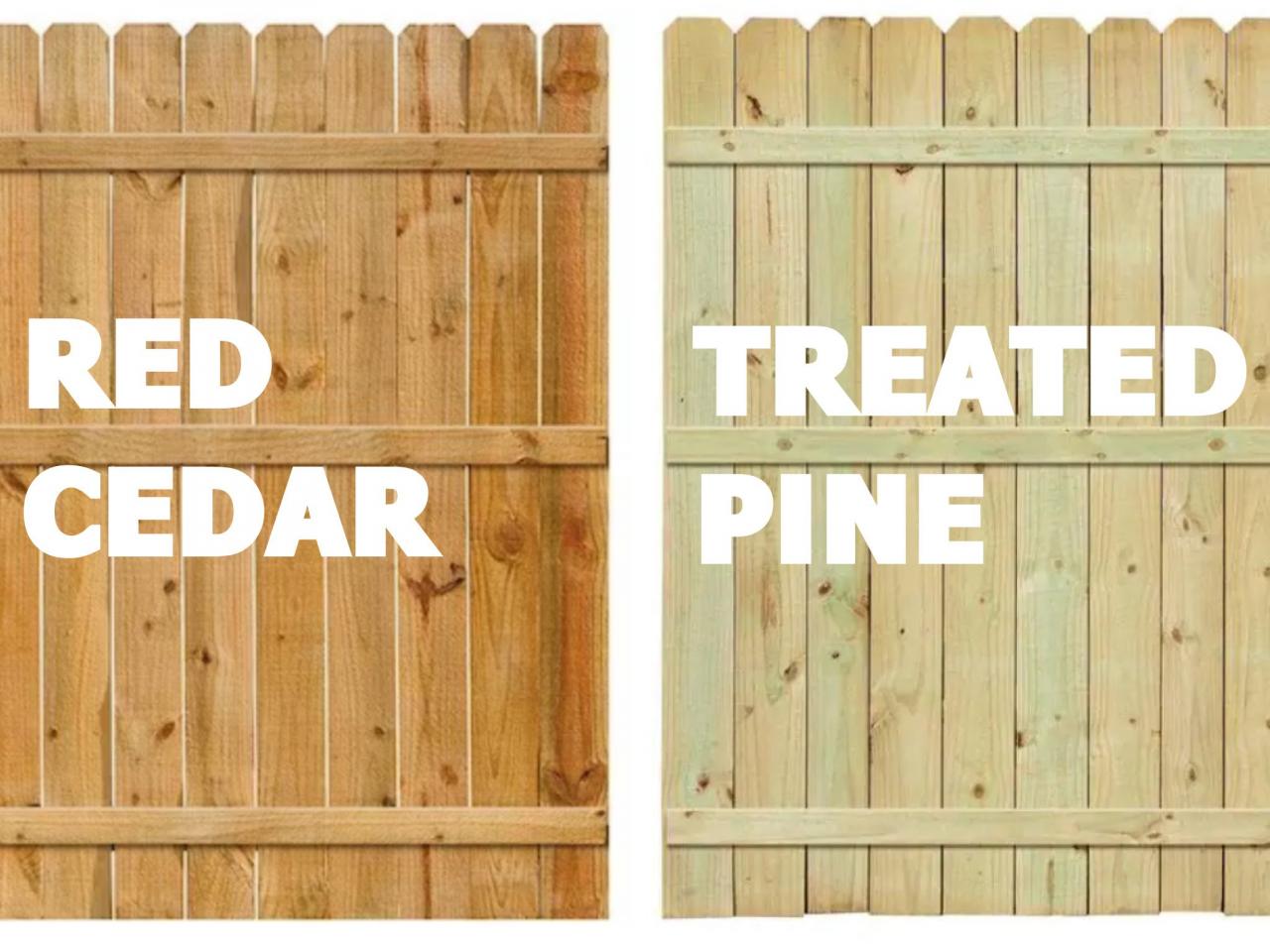Benefit of pressure-treated wood – In the realm of outdoor construction, pressure-treated wood emerges as a formidable force, offering an array of benefits that enhance durability, resistance, safety, and aesthetics. This detailed analytical essay delves into the intricacies of pressure-treated wood, exploring its unique characteristics and the advantages it bestows upon various outdoor structures.
Pressure treatment, a process that infuses wood with preservatives, transforms ordinary lumber into a formidable barrier against the ravages of time and nature. By understanding the science behind this treatment and its practical applications, we gain invaluable insights into the exceptional properties of pressure-treated wood.
Durability
Pressure treatment is a process that infuses wood with preservatives under high pressure, enhancing its resistance to rot, decay, and insect infestation. This treatment penetrates deeply into the wood’s fibers, providing long-lasting protection.
Pressure-treated wood is widely used in outdoor structures due to its durability. It is commonly employed in:
Decks
- Pressure-treated lumber is ideal for decks as it withstands moisture, foot traffic, and weather conditions, preventing rot and decay.
Fences
- Fences made from pressure-treated wood resist warping, splitting, and decay caused by exposure to moisture and sunlight.
Gazebos
- Pressure-treated wood is suitable for gazebos as it provides structural integrity and protection against moisture and insect damage, ensuring longevity.
Resistance to Pests and Insects
Pressure-treated wood undergoes a process that infuses it with specific chemicals, rendering it highly resistant to wood-boring insects, such as termites and carpenter ants. These chemicals, typically chromated copper arsenate (CCA) or alkaline copper quaternary (ACQ), act as effective deterrents against pests and insects, protecting the wood from structural damage and infestation.
Long-term Protection
The chemicals used in pressure treatment provide long-term protection against pest infestations. The chemicals are deeply embedded into the wood fibers, ensuring their effectiveness even in harsh outdoor environments. Pressure-treated wood retains its resistance to pests and insects throughout its lifespan, eliminating the need for frequent chemical treatments or replacements.
Wood has been a staple in construction for centuries due to its numerous benefits. Its natural strength and durability make it ideal for load-bearing structures, and its versatility allows it to be used in a wide range of applications. Additionally, wood is a sustainable and renewable resource, contributing to its environmental friendliness.
For instance, using neem wood combs offers several health benefits, including improved hair growth and reduced dandruff, due to its antifungal and antibacterial properties as mentioned here.
Effectiveness against Specific Pests
Pressure-treated wood is particularly effective against the following pests:
- Termites:CCA and ACQ chemicals are highly toxic to termites, preventing them from feeding on or damaging the wood.
- Carpenter Ants:Pressure-treated wood repels carpenter ants, discouraging them from nesting or burrowing into the wood.
- Other Wood-Boring Insects:Pressure-treated wood is resistant to a wide range of wood-boring insects, including beetles and woodworms, protecting the wood from structural damage and weakening.
Safety and Environmental Considerations
Pressure-treated wood requires proper handling and disposal due to its chemical composition. Safety precautions and environmental regulations are crucial to minimize potential risks.
Safety Precautions
When handling and using pressure-treated wood, protective gear is essential. Wear gloves, eye protection, and a dust mask to avoid direct contact with the chemicals. Avoid inhaling sawdust or sanding dust, as it can cause respiratory irritation. Cut and shape the wood in well-ventilated areas to prevent chemical exposure.
Environmental Regulations
Pressure-treated wood is regulated by environmental agencies due to the presence of chemicals. Disposal must follow specific guidelines to prevent soil and water contamination. In many regions, it is prohibited to burn pressure-treated wood, as it releases toxic fumes. Landfill disposal is often restricted, and alternative disposal methods like recycling or incineration may be required.
These regulations aim to protect ecosystems and human health.
Cost and Maintenance
Pressure-treated wood is generally more expensive than untreated wood, but it offers significant savings in the long run due to its increased durability and resistance to decay and pests. The cost of pressure-treated wood varies depending on the type of wood, the size of the project, and the location.
The benefits of hibiscus flowers extend beyond their aesthetic appeal. These vibrant blooms possess numerous medicinal properties. They contain antioxidants that help protect against cell damage, and their anti-inflammatory properties make them effective in reducing pain and swelling. Hibiscus flowers have also been shown to lower blood pressure and cholesterol levels, promoting cardiovascular health as discussed in this article.
However, it is typically 20-30% more expensive than untreated wood.Maintaining pressure-treated wood is relatively easy. Regular cleaning and inspection can help extend its lifespan and preserve its appearance. To clean pressure-treated wood, simply use a mild soap and water solution and a soft brush.
Artificial flowers offer a practical alternative to their natural counterparts. They are more durable and require minimal maintenance, making them ideal for busy individuals or those who live in areas with extreme climates. Moreover, artificial flowers come in a wide variety of styles and colors, allowing for endless customization options.
Their realistic appearance can add a touch of beauty to any space without the need for watering or sunlight as highlighted here.
Avoid using harsh chemicals or abrasive cleaners, as these can damage the wood. It is also important to inspect pressure-treated wood regularly for any signs of damage, such as cracks, splits, or rot. If any damage is found, it should be repaired promptly to prevent further deterioration.
Tips for Maintaining Pressure-treated Wood
- Clean pressure-treated wood regularly with a mild soap and water solution.
- Avoid using harsh chemicals or abrasive cleaners.
- Inspect pressure-treated wood regularly for any signs of damage.
- Repair any damage promptly to prevent further deterioration.
- Apply a sealant or stain to pressure-treated wood to protect it from the elements and extend its lifespan.
By following these simple tips, you can extend the lifespan of your pressure-treated wood and preserve its appearance for many years to come.
Aesthetic Versatility

Pressure-treated wood offers a range of aesthetic options to complement various architectural styles and outdoor spaces. Available in natural, stained, and painted finishes, it provides versatility in creating visually appealing outdoor structures.
Natural pressure-treated wood retains its original wood grain and color, adding a rustic charm to decks, fences, and pergolas. Stained pressure-treated wood enhances the natural wood grain while adding a touch of color, allowing for customization to match existing structures or create a desired ambiance.
Painted Pressure-Treated Wood, Benefit of pressure-treated wood
Painted pressure-treated wood provides a solid, opaque finish that conceals the wood grain. This option offers a wide color palette, enabling homeowners to match their exterior décor or create bold accents. Painted pressure-treated wood is ideal for modern or contemporary architectural styles, where a clean and uniform look is desired.
Closing Summary: Benefit Of Pressure-treated Wood

As we conclude our exploration of pressure-treated wood, its multifaceted benefits become undeniable. From its exceptional durability to its resistance against pests and insects, pressure-treated wood stands as a testament to innovation and the pursuit of longevity in outdoor construction.
Its versatility and aesthetic appeal further enhance its value, making it an ideal choice for a wide range of applications. By embracing the advantages of pressure-treated wood, we empower ourselves to create outdoor spaces that are both resilient and visually stunning.
User Queries
What is the primary advantage of using pressure-treated wood?
Pressure-treated wood offers superior resistance to rot, decay, and insect infestation, ensuring the longevity of outdoor structures.
Is pressure-treated wood safe to use?
Yes, pressure-treated wood is safe to use when handled and disposed of properly. It is essential to follow safety precautions and adhere to environmental regulations.
How does pressure treatment enhance the durability of wood?
Pressure treatment infuses wood with preservatives that penetrate deep into the fibers, creating a protective barrier against moisture, rot, and decay.
What are the different types of pressure-treated wood available?
Pressure-treated wood comes in various types, including natural, stained, and painted finishes, allowing for customization and aesthetic versatility.
How can pressure-treated wood be used to enhance outdoor spaces?
Pressure-treated wood is ideal for decks, fences, gazebos, and other outdoor structures, providing both durability and visual appeal.

